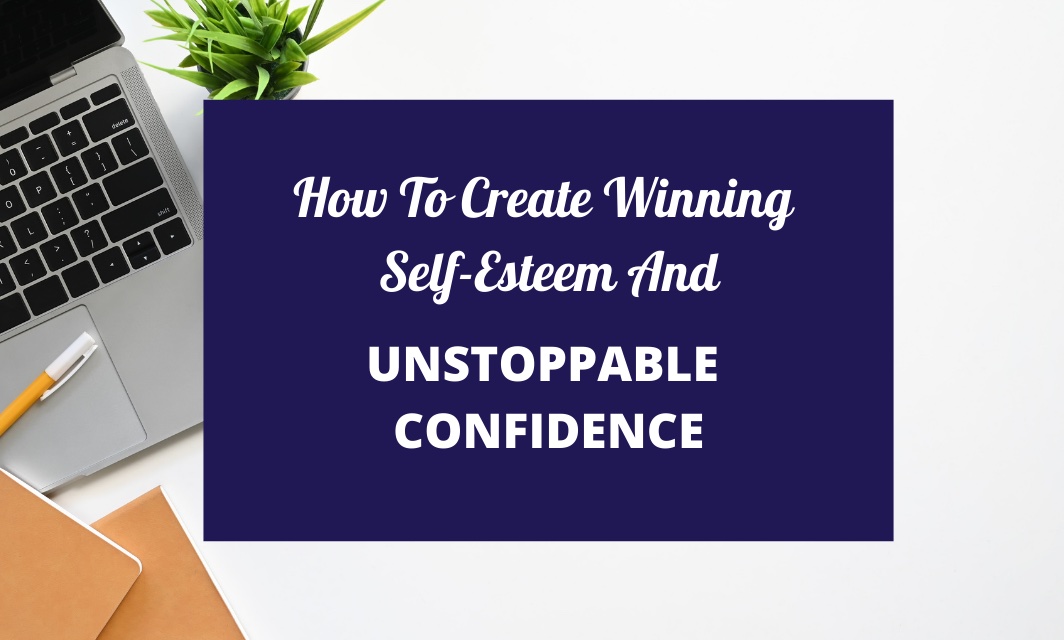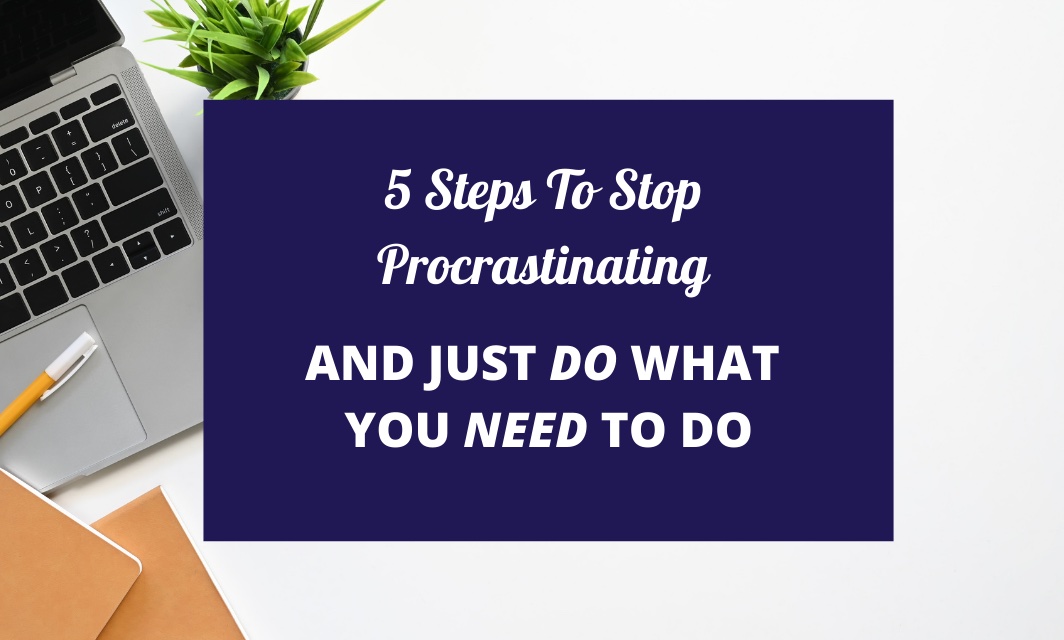Is low self-esteem holding you back in life?
In this post I’ll be talking about where low self-esteem comes from, how it’s likely controlling you and your results and how to improve it.
As someone who has experienced divorcing parents as a teenager, serial exam failures, business failure, two lots of (what I now recognise as) post-natal depression and staggering amounts of debt, I (like you, probably) have experienced my fair share of low self-esteem over the years.
And having come out the other side with flying colours, it really pains me to see just how it paralyses friends, family, people who come to work with me and many of the men and women I meet in my Free 5 Day Science Of Success Challenges.
That’s probably because I know the huge transformation that happens when people get rid of that low self-esteem and replace it with total self-belief and the courage to face any problems that may arise.
When you have faith in your own abilities and are completely at ease with yourself and your behaviour, you absolutely can accomplish anything you put your mind to.
What Is Self-Esteem?

Self-esteem is how much you value yourself – your self-worth, if you will – and it is driven by your self-image.
Your self-image is the way you see yourself – the picture you have in your mind of how you look and how you behave, often compared to other people.
This image you hold in your mind of you makes you feel a certain way about yourself – and that feeling is what we refer to as self-esteem.
Those of you who’ve followed me (or my mentor, Bob Proctor) for any length of time will have seen us explaining The Stick Person (and if you haven’t, you really need to join my next 5 Day Science Of Success Quick Start Challenge!) and will know this:
Your thoughts create feelings, your feelings dictate the actions you take, and your actions create your results.
So the thoughts you hold in your mind about yourself and the feelings that this generates (your level of self-esteem) control the actions you take and, therefore the results you’re experiencing.
Low self-esteem prevents you doing the things you know you need to do to move forward in all areas of your life and can, therefore, negatively impact your health, relationships, income and general well-being.
If it’s your self-image that drives your self-esteem, it follows that in order to improve your self-esteem (and subsequently the results in all areas of your life) you must first improve your self-image.
However, in his book, Psycho-Cybernetics (one of my go-to books!), Maxwell Maltz says:
“The unhappy failure-type personality cannot develop a new self-image through pure will-power, or by arbitrarily deciding that you’re ‘going to change it’. There has to be some grounds or justification – some reason for deciding that the old picture of yourself is in err and that a new picture is appropriate.
You cannot merely imagine a new self-image unless you feel that it is based on truth. Experience has shown that when a person does change his self-image, he has the feeling that, for one reason or another, he sees or realises the truth about himself.”
So my aim with writing this article is to try to get you to realise the truth about yourself on the inside, because you have to get to grips with the truth about who you really are, what you’re really capable of and all the things you really want to do.
Resources:
Where Did My Low Self-Esteem Come From?

Sometimes low self-esteem can be triggered by specific events but, as we’ve already established that underlying low self-esteem is driven by a negative self-image, let’s take a look at how a self-image is formed.
In his book ‘Outwitting The Devil’, Napoleon Hill talks about how we are all ‘imitations’.
As little babies, we’re brought into the world a perfect, neutral individual and we immediately begin to copy the adults around us.
We copy the way they speak, the way they make facial expressions, the way they walk – it’s how we learn the skills we need as we develop into young children.
We need to do that, there’s no other way to learn as a newborn.
As we get a little older, we start to imitate our friends, teachers, grandparents, just following along copying what the people around us are doing, how they’re behaving, how they’re talking, how they’re reacting…
We pay attention to the instructions they’re giving us, the things they believe, the things they like and dislike.
And thus we become ‘imitations’ of a mixture of the people around us.
There’s no wonder that as we grow into adults we start to struggle with how we feel about ourselves because we’re living with this ‘false self’ that was created by unconsciously copying other people.
We have never made a conscious decision about the person we want to be in life – we just, sort of, fell into it!
Judgement

One of the biggest factors in creating a negative self-image (and, therefore, low self-esteem) is judgement. Judgement is everywhere, we were brought up to judge.
We watched our parents judge other people, talk about other people, criticise other people, criticise family members, talk behind people’s backs, talk about the neighbours…
They started judging us as they raised us and then we started judging ourselves.
And this judgement was usually not intended to cause harm – the people who brought us up were trying to teach us ‘right’ from ‘wrong’, ‘good’ from ‘bad’.
As a general rule, as parents, we want our children to grow up with the values we believe are the correct ones.
We don’t want them (or us) to be criticised by others so we condition them to behave a certain way.
If you were good (in your parents’ eyes) when you were young you were praised, if you were bad you were punished or criticised.
Judgement is a continual cycle when you’re young.
You didn’t want to be criticised and punished, you wanted to be praised and rewarded, so you learned to judge yourself and your behaviour and self-correct in order to get the results you wanted – to the point where that judgement became automatic and subconscious.
This whole process sets up a fear of criticism that you then take into adulthood unless you work to change it.
Of course, this process of judgement can also apply to relationships later in life too – we are continually building and refining that self-image and, if we let it, this kind of judgement and criticism can hold us back our whole life.
For some people it creates an inferiority complex – you just never feel good enough and you can begin to believe there’s something wrong with you.
Your Self-Esteem Is Faulty - There's Nothing Wrong With You
Have you ever asked yourself ‘What’s wrong with me?’
Do you ever wonder why you never get an answer?
That’s because THERE. IS. NOTHING. WRONG. WITH. YOU.
The only thing that’s wrong is the way you’re thinking and what you believe about yourself that isn’t true.
This self-image you hold of yourself (that’s been built by other people, remember) is almost like an overcoat that you’ve been given to wear.
At first it was tight and a bit scratchy, it didn’t feel very nice but you sort of just put it on because you’d been told to, and accepted that you had to wear it.
And you grin and bear it for a while and then you just kind of grow accustomed to it and you become locked into the belief that this is just the way your life was supposed to be.
It’s one of the reasons people find themselves feeling ‘just not quite happy’ or ‘just not quite fulfilled’ – or even really struggling with a really deep sense of disconnect, unhappiness, searching for joy, peace and freedom.
But the truth is this overcoat you’ve been given doesn’t belong to you.
You Are Perfect

If you look at children, they are born spiritually perfect. When we were little, we were very confident, we were strong-willed, we knew what we wanted and weren’t afraid to ask for it, we were imaginative, intuitive, loving and giving.
We would just confidently move through our little life doing whatever we wanted to do and, if we wanted something, we were very convincing when it came to trying to get it!
We didn’t need anyone’s approval and we weren’t scared of anything.
And what happened was, as we started to grow up and become consciously aware of what was going on around us – when we started trying to be right and not be wrong and trying to get praise and reward, and avoid criticism and punishment…
THEN we started worrying about what other people think.
And this fear started burying that perfection that we were born with.
We started to layer fear, doubt, worry, guilt, shame, embarrassment over the top of that perfection.
So you have to realise that, underneath it all, you are inherently perfect in every way – you may not do perfect things, and that’s because of the imperfect conditioning you’ve received.
But now is the time to take responsibility.
You can’t just continue doing imperfect things and making the mistakes you’re making, which is what a lot of people are doing – they’re just making the same mistakes over and over again trying to get it right.
And quite often I find it’s not until people are introduced, during coaching, to this notion of how our self-image (and self-esteem) controls us, that they discover what’s making them do the things they’re doing.
So you’ve got to make a decision. You have to either:
- Have the courage to act like the person you want to become
- Have the courage to be yourself
Only you can decide.
4 Key Steps To Move You Forward And Start To Improve Your Self-Esteem
1. Stop Looking Backwards

One of the biggest things I’ve learned is to stop looking backwards.
In Psycho-Cybernetics, Maxwell Maltz says “If you’re spending any time thinking about the past, talking about the past, giving any kind of energy or attention to the past in any negative way, it’s going to keep you where you are.”
He explains that if you keep looking back on your past, because of all the things that happened to you, you stay as that person.
You stay stuck and you keep making the same mistakes over and over again.
Now we know we can’t change the past, but we have been conditioned to talk about it ALL THE TIME!
I’ve seen so many clients who’ve been seeing counsellors or therapists for years, they’ve been on anti-depressants and other medication and they come through the Thinking Into Results programme and they come right off their medication.
They stop seeing these other professionals because the techniques they were using were keeping them stuck (or making them worse).
They’ve never been shown how their mind works before and suddenly, they have a way of changing their thoughts, feelings and actions that they’ve never been shown before and the results are amazing.
You have to stop looking backwards.
You can literally stop yourself, the minute you start thinking about anything negative that happened in the past, and say “No. I’m not looking backwards, I’m only looking forwards.”
You need to be concentrating on where you’re going, not where you’ve been, because it’s gone.
2. Don't Make Stuff Up!

In his book “The Four Agreements”, Don Miguel Ruiz talks about how we live our lives according to ‘agreements’ we made with our parents, grandparents and other people as we were growing up.
His promise is that, by replacing those agreements with the four agreements in this book, you can literally be free.
In fact the subtitle of the book is the ‘Practical Guide To Personal Freedom’
The Third Agreement Ruiz gives us is ‘Don’t Make Assumptions’.
He says “Find the courage to ask questions and to express what you really want. Communicate with others as clearly as possible to avoid misunderstandings, sadness and drama. With just this one agreement you can completely transform your life.”
We make assumptions, we get into conflicts, we feel uncomfortable in relationships – maybe we’re fearful that something bad’s going to happen and we let our imagination take off on it’s own.
Pretty quickly your subconscious mind starts to believe this negative scenario you imagined is actually true and you start to act as though it is.
It generates real drama that can be truly damaging.
So you’ve heard the phrase ‘To assume makes an ‘ass’ of ‘me’ and ‘u’?
That’s an understatement.
Don’t make stuff up or assume stuff about yourself or other people.
Resources:
3. Love Yourself

You have to fall in love with who you are and what you are, and for many of us that’s an on-going work-in-progress.
See yourself as a child again. When you were a child you weren’t worried about how you looked or sounded or what anyone else thought of you.
When you think of yourself, think of yourself as that child.
When you’re talking to yourself, talk as you would to that child – with love, understanding and encouragement.
You can’t judge yourself for things you’ve done and mistakes you’ve made in the past. They’re gone.
In fact, they’re only living on in your memory, so if you stop thinking about them, they really are dead and gone.
Remember, the truth is when you arrived here you arrived with this amazing creativity, imagination, a big heart, full of self-confidence.
Go back to the beginning and remind yourself who you truly are.
Writing out or saying affirmations outloud is a great way to develop this love and get rid of your self-critic.
I have a mini-course called ’30 Days To A Winning Self-Image And Unstoppable Self-Confidence’ that was created for just this purpose and you can register for that HERE
4. Follow Your Heart

According to Hebrew and Greek cultures, the heart actually represents the location of our feelings, desires, and emotions – the subconscious mind.
Following your heart means getting in touch with your desires and following your intuition.
And when you follow you intuition, you are doing what you believe is right for you and for others.
This is an important factor in creating a positive self-image and raising your self-esteem.
Your intuition is one of your most powerful mental faculties, and we cover this in depth in Lesson 5 of Thinking Into Results.
When we’re little we use our intuition all the time. Children are really, really intuitive – they can pick up on things we don’t.
They can sense things: feelings, angels, spirit…
They’re very connected, in fact they rely on their intuition to some extent.
And for many of us that weakens as we get older because as adults we’re conditioned NOT to use it, not to rely on it.
But intuition is the human form of instinct that other creatures are born with and rely on to get through life. It’s that part of them that tells them what they should be doing, where they should be going to become what they’re supposed to be.
My mentor, Bob Proctor, always says your intuition is God (or your spirit or the Universe) talking to you.
So you must work on strengthening your intuition (and there are lots of ways to do that) so you can fight that negative paradigm and make confident decisions based on what you really want and what you believe is right.


Emma Hague is a Certified Proctor Gallagher Consultant and Real Results Mentor based in the U. K.
A qualified accountant by profession, Emma now teaches self-employed women (and some very lucky men!) over 40 in the UK, USA & Canada how to achieve their life-goals – no matter where they might be right now.
As a business owner for over 14 years, Emma believes passionately that we need to take control of (and responsibility for) our own lives in order to create the freedom we all want.
Away from her business, Emma is an avid rugby league fan and loves to spend time with her family (she is mum to two young girls and two grown-up step-sons).
She also enjoys running, beach holidays and going on city breaks with her husband, Karl.
Emma’s own turning point came when, having hit rock bottom financially, she realised that after selling the family home to pay off debts and just try to ‘get in front’, she would likely struggle to ever get a mortgage again.
Bringing their dream of a large, beautiful family home and worldwide travel crashing down around them.
Furious with herself, and the system, Emma committed to taking back control and creating the future she wants for her and her family by doing whatever it takes to create the life she really wants – and to help others do the same.
Emma understands the frustration, and time pressure felt by men and women who are entering the second half of their life and wondering how they’ll ever achieve the things the dream of before their time on this planet is over.
She is a coach and mentor grounded in the real-world and can help you create what’s next for you.



























